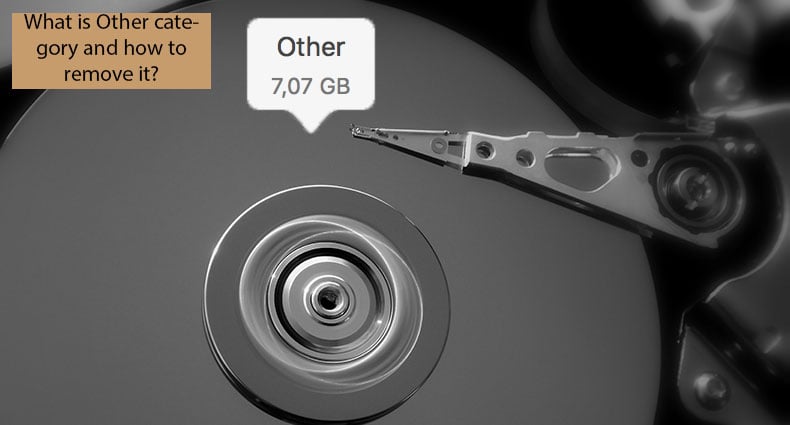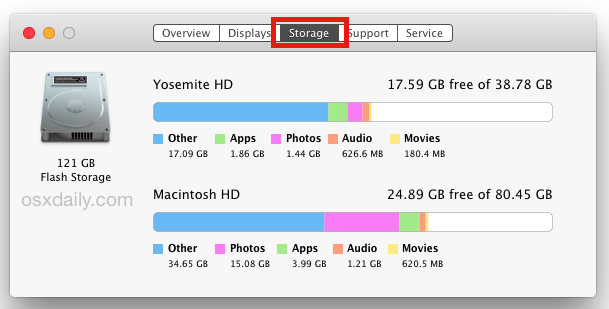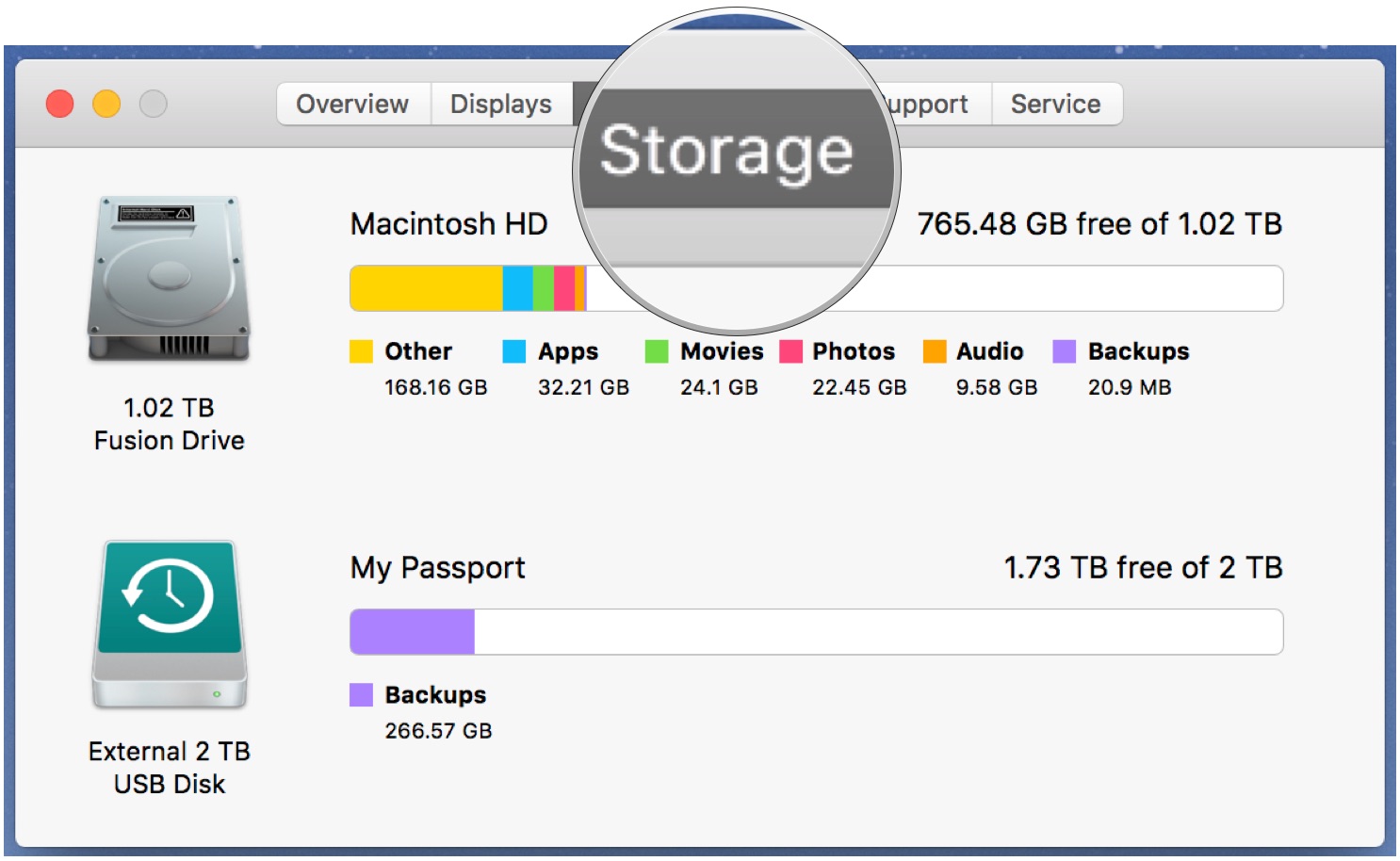Over the past couple of months, I've been using one of the new Apple MacBook Airs based on Apple's proprietary M1 processor, and I've been very impressed. It has proven quite speedy in day-to-day use. Apple has done a surprisingly good job at getting applications to run on the new silicon.
- TarDisk is available for the MacBook Air, MacBook Pro with Retina display, and older MacBook Pros. The 128 GB TarDisk is available for $149, £103 or AU$202 or 256 GB for $399, £276 or AU$542.
- Apple MacBook Air (M1 Chip with eight-core CPU, seven-core GPU, and 512GB storage) — $1,249 16GB RAM upgrade costs $200 Storage upgrades: 512GB ($200), 1TB ($400), 2TB ($800).
You can free up storage space by storing your content in the cloud if you want to remove unwanted files after checking storage on MacBook Air/Pro. Click the Store in iCloud button, then choose from these options: Files from Desktop and Documents in iCloud Drive. Store all files in these two locations in iCloud Drive.
What's really worth talking about with the new MacBook Air is Apple's M1 processor. This is Apple's proprietary design, which takes some of the items already used in Apple's A14 Bionic processor (used in the iPhone 12) and processors for the iPhone and iPad and expands them. Apple's processors use the ARM instruction set, but Apple designs its own cores for both the CPU and GPU.
The M1 has 4 high-performance cores and 4 efficiency CPU cores, 7 or 8 GPU cores, and what Apple describes as a 16-core 'neural engine.' It is clocked at 3.2GHz and built on TSMC's 5nm process. I've been using the basic $999 MacBook Air, which has 8GB of RAM and 256GB of flash storage, and a 7-core version of the GPU; as opposed to the $1,249 model with an 8-core GPU and 512GB of storage.
I've tried ARM-based processors before—such as in the Lenovo Flex 5G—and found great battery life, but limited performance and compatibility. The good news about the M1 is that Apple seems to have kept the battery life, but has also done surprisingly well at performance and compatibility.

With Mac OS 11.1 (Big Sur), the M1-powered MacBook Air can run three classes of applications: native applications designed for the processor; Intel-applications that run through the Rosetta 2 emulator; and applications designed for the iPhone or iPad. I've tried all of these. (Note that Big Sur does not support 32-bit legacy apps, like Office 2011, but really those applications should have been upgraded long ago.)
Of course, all of Apple's native applications, such as Mail, Safari, and FaceTime are now native, and these were quite responsive. I was able to run native versions of the core Microsoft Office applications, Zoom, WebEx, and Firefox. All of these worked as expected, and seemed quite snappy.
For applications that haven't yet been ported, you can use the Rosetta 2 emulation mode, though when you install them you get a pop-up telling you that you are using software designed for Intel processors. In this fashion, Photoshop worked well enough, though it wasn't quite as responsive as it is on Intel-based machines. Adobe says a native version of it, and the other parts of the Creative Cloud client applications, are coming soon. (Lightroom is available in a native version.) I'd be skeptical of Rosetta for things like video editing or gaming, but for daily productivity work, compatibility isn't a problem. Note that most high-end gaming titles are not available on macOS, but there are plenty of older and casual games available.
Theoretically, you can also run iOS and iPadOS apps on the new MacBook as well, but few of these seem to be available yet. (Of course, many of those apps are optimized for touch use, which the Mac doesn't support, so they'll need some updating.)
So how fast is the MacBook Air and the M1? In PCMag's tests, the new MacBook Air did phenomenally well on GeekBench, but I'm not sure how relevant that is, as there are differences in the architectures (such as cache amounts and SMT) that may impact benchmarks more than real-world applications. But it was also quite impressive on the native version of Cinebench (R23), and while not as impressive, still quite good on Cinebench R15, the Intel version run through emulation. It was slower than other Macs on the Intel-based Photoshop benchmark, though the results were still comparable with most Windows notebooks without discrete graphics. (PCMag goes into more detail here about how the M1 does on different applications, including gaming.)
Of course, what matters is how it works in the real world. In my use, all of the native applications seemed quite impressive, and while emulated applications like Photoshop weren't as snappy, they ran well enough. I was pleasantly surprised to see that a very large spreadsheet I often use for testing completed in 39 minutes, faster than I've seen on any Windows-based laptop, including the notably larger ThinkPad X1 Extreme (where it took 44 minutes).
With numbers like this, Apple's new M1 proves to be more than competitive with the latest Intel and AMD mobile processors. It's a huge change from the last time Apple tried to design its own laptop processors, back in the PowerPC era. Some of this is now due to the fact that TSMC's 5nm node is more dense and more efficient than Intel's 10nm node, but some has to be due to the design itself—Apple has gained a lot of experience by designing chips for phones and tablets.
Also, the MacBook Air has a 50 watt-hour battery, and in its tests, PCMag got an amazing 29 hours of battery life. I didn't get nearly that, but it did make it through a full day on a charge with some battery to spare.
Machine Details
Beyond just the processor, the new MacBook Air doesn't look very much changed from previous models. With a 13.3-inch, 2,560-by-1,600 display, it measures 0.63 by 11.97 by 8.36 inches and weighs 2.8 pounds, very good for this class of machine, if no longer special. Compared to some of the newer designs I've seen lately, the bezels around the screen are a bit larger, but not enough so that it makes a huge difference. The 400-nit IPS display looks great, with a wide color gamut. For reasons I still do not understand, Apple does not offer a touch screen option, which I do find useful in Windows laptops.
The MacBook Air has two USB-C/Thunderbolt ports on the left side of the machine, which are also used for charging, and a headphone jack on the right. Of course, I wish it had more ports (HDMI in particular would be useful) but it's better than some Apple laptops that just have a single USB-C. In use as my desktop, I mostly used a dongle with an HDMI port so I could add an external monitor and a USB-A port for an external keyboard and mouse. (Since I use more Windows machines than Apple ones, I admit I changed the mouse direction settings.) As usual for Apple laptops I've used, I found the large trackpad to work quite well. Apple has updated the keyboard from the last one I used, and though it's a little shallow, I thought it was actually quite good.
The MacBook Air was fine on video conferencing. The internal 720p webcam was quite good. Of the machines I've tested recently, the only one I'd rate better would be on the Surface Pro 7, and then not by much. The audio from twin speakers on either side of the keyboard sounded quite good. It doesn't have the noise cancelling features of the latest high-end Windows notebooks, but for a basic consumer notebook, it's very nice.
It lacks some business features. There's no physical webcam cover, no LTE or 5G option, and no option for some of the features often used in enterprise management. (While many enterprises do have some Macs, they typically manage them separately from mainstream enterprise notebooks.) But none of this is surprising. It doesn't have face unlocking but does have Touch ID via a nice fingerprint reader built into the power button, and you can also use an Apple Watch to unlock.
I'm not going to review the latest version of MacOS, Big Sur (I'm running version 11.1) now (here's PCMag's review) but it adds a lot of nice but not huge improvements, such as a new Control Center and Notifications (that now look more like their equivalents in iOS), along with some more significant privacy changes in Safari. Needless to say, MacOS integrates far more deeply with iPhones than Windows does; and less well with Android phones. (I find it works quite well. Both Windows and MacOS have their advocates and have for years, and nothing in the current version of either is likely to compel users to switch.)
Overall, the M1-powered MacBook Air is a terrific laptop for the price, and a big step-up from previous MacBooks. While there are some features I'd love to have—more ports, smaller bezels, a webcam cover, and a cellular option are top of mind—the MacBook Air is a very solidly built notebook with a great display and surprisingly good performance.
Here's PCMag's full review.
After drinking your first cup of coffee, it is time to start your day with your computer. However, the popping-up message says “Your disk is almost full”. You need to optimize storage to save space on Mac. The dreadful Mac storage is almost full message make you realize that how much stuff stored on your Mac. Well, you may get shocked that “Other” takes up the most storage space.
What is Other on Mac storage? It is easy to understand about “Audio”, “Movies”, “Photos”, “Apps” and “Backups”. But what does “Other” mean in Mac storage? Is there any way to clean up Other storage on Mac? Luckily, you can figure out what is Other storage on Mac and how to remove files from Other storage in details here.
- Part 1: What You Need to Know about Other Storage on Mac
- What Is Other on Mac Storage
- How to Check Other Storage on Mac
- Part 2: How to Delete Other Storage to Free Up Disk Space on Mac
- 1. Remove Unwanted Documents to Free Up Other Storage on Mac
- 2. Delete Cache Files in Other Mac Storage
- 3. Clear Large Files and Folders to Clean Up Mac Other Files
- 4. Clean Up App Plugins and Extensions from Other on Mac Storage

Part 1: What You Need to Know about Other Storage on Mac
Let’s solve the first question together. What is Other storage space in Mac OS X? Which category should Other belong to? Just read and get your answer.
What Is Other on Mac Storage
Generally speaking, all Mac files that cannot be divided into “Apps”, “Photos” and other categories are Other files. These are some data types that are stored in Other storage on Mac.
- System and temporary files about macOS, like logs, preferences files and more.
- Cache data from browser, apps, photos, system, etc.
- Documents in pdf, doc, psd, csv, etc.
- Personal information.
- Browser history, cache, downloads and more.
- Archives and disk images in zips, dmg, iso, tar, etc.
- App support, app accessories, iCloud files, screen saver, fonts, updates and other file types not recognized by Spotlight.
How to Check Other Storage on Mac

Part 2: How to Delete Other Storage to Free Up Disk Space on Mac
After knowing what is Other on Mac storage, you need to take measures to delete Other storage on Mac. It is impossible to entirely get rid of Other on Mac. But you can clean up your Mac Other storage in multiple aspects. It is true that you can find and delete each Other file manually. If you want to get a quicker way to clear Other storage on Mac, Aiseesoft Mac Cleaner is your first choice. You can download the free version from its official site.
Alison Krauss - When You Say Nothing At All. 320 Kbps 9.49 MB 4:9 Uploader: Alison Krauss. When you say nothing at all, download audio mp3 when you say nothing at all, 128kbps when you say nothing at all, full hq 320kbps when you say nothing at all, mp3. When you say nothing at all mp3 download.
1. Remove Unwanted Documents to Free Up Other Storage on Mac
Way 1: Manually Delete Other Documents on Mac
Way 2: Quickly Delete Large and Old Files from Other
2. Delete Cache Files in Other Mac Storage
Way 1: Manually Delete Cache files from Other Data Storage
Clearing Storage On Macbook Air
Way 2: Quickly Delete User Cache Files to Free Up More Space
3. Clear Large Files and Folders to Clean Up Mac Other Files
Way 1: Manually Delete System and Temporary Files from Other on Mac
Macbook Air Storage Upgrade
Way 2: Quickly Clean System Files and Logs from Other Storage Space
Macbook Air Other Storage Delete
4. Clean Up App Plugins and Extensions from Other on Mac Storage
Way 1: Remove Extensions and Plugins from Safari
Way 2: Remove Extensions and Plugins from Google Chrome
What Is Other On Macbook Air Storage
Furthermore, you can also use the built-in app uninstaller, duplicate finder, file manager, unarchiver, file hider, system performance monitor and more here. In a word, you can delete Other on Mac and speed up Mac in clicks. Mac Cleaner is 100% safe to use. You can preview, filter, organize and select any Mac file before cleanup. The whole process will not cause data overwritten. You will never know how fast your Mac computer can be before running Aiseesoft Mac Cleaner. Well, why not free download the program to have a try right now!

What do you think of this post?
Mac Other Storage Space
Excellent
Rating: 4.5 / 5 (based on 103 votes)Follow Us on

Remove Other Storage On Macbook Air
- What Is the Other on My iPhone and How to Clear Other Data
What is the other on my iPhone? How to clear other space from iPhone? Many of you have the same questions. Read this post and find the answers.
- How to Uninstall Programs on Mac
How do I uninstall a program on Mac? Learn how to remove a program from Mac from this page.
- How to Check and Clean up Disk Space on Mac
How to access and free space on Mac? You can learn how to clean up disk space on Mac from this page.
